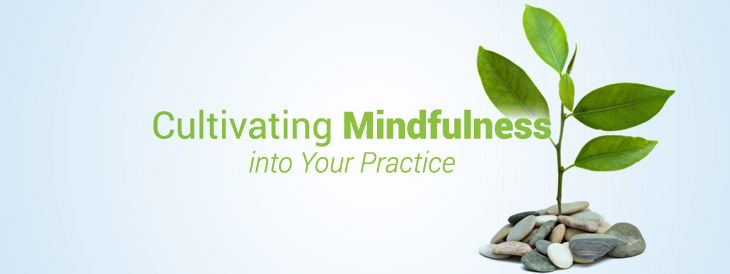“Mindfulness”: The New Science of Finding Focus & Happiness in Dentistry
Jon Kabat-Zinn, PhD, first adapted“mindfulness practice for health promotion”in 1979 at the University of MassachusettsMedical Center. His Mindfulness-Based Stress Reduction program(MBSR) has been scientifically validated,accepted worldwide and used in manydisciplines, including medical, dental,nursing, education, sports and now extensivelyin the world of business. Schools arealso introducing it to our future generationson a routine basis. According to Dr.Kabat-Zinn “Mindfulness” is a state ofbeing that emerges through paying attentionon purpose, in the present momentand non-judgmentally to the unfolding ofexperience, moment by moment”. Simplyput it is a mental and emotional state thatis achieved by focusing one’s consciousawareness fully on the present momentwhile calmly acknowledging and acceptingone’s feelings, thoughts, and bodilysensations.
“Mindfulness” is a much-neededopportunity to take back our lives fromthe clutter of noise and dramatic distractionthat competes for space in ourconsciousness every moment of our busypractice life; much of which is spentjuggling the multiple tasks an averagedentist must manage on an average day– such as clinical challenges, demandingpatients, changing schedules, overcomingtreatment acceptance obstacles,team conflict and group dynamics,financial responsibilities & personal liferesponsibilities. We are also practicingin a rapidly evolving profession wherewe have greater clinical and theoreticalknowledge; while the rapid proliferationof technology continues to changethe face of dentistry and the way itspracticed. Today the average dentisthas so much more to think about asthey go through their clinical work day.“Too many of us are over scheduled,constantly multi-tasking, over thinking,over connected and overstimulated byall the noise, interruptions and complexityof our high paced practice lives.
So, what can you and I do aboutthis? We must learn to manage ourselves;in particular, how we think. Wemust learn to manage our attentionand energy so that it is not diffused &diluted by things that are not relevantor important in the present moment weare in. Mindfulness experts will tell usthat even when multitasking you can doit with a single tasking mindset. Theultimate goal of mindfulness is simplyto give your attention fully at any giventime to what you are doing, who youare doing it with, and why (the purpose)you are doing it.
One can communicate more mindfullyby truly hearing and listening to ourpatients’ chief complaints. We can enjoy a meal with a friend more mindfullyby not checking our phones or socialmedia. We can participate in meetingsmore mindfully by fully focusing on thepurpose and goals of the meeting. Wecan even vacation more mindfully withfamily members by interacting wholeheartedly and connecting deeply whileleaving work temporarily behind. Similarly,one can practice clinical dentistryand serve patients more mindfully bymanaging any distractions and stayingfully focused on our patients. It is undeniablethat our best clinical dentistryis delivered and our best patient connectionsare made; when we are fullyengaged in the present moment with ourpatients and completely focused on thedetails of the clinical procedure at hand.
Engaging in a more mindful day to dayexistence at your dental office will notonly be positively felt by your patients. Itwill also immediately begin to give youan expansion in the level of fulfillmentyou draw from being a practicing dentist.Ethically & morally don’t we owe itto our patients to give them our 100%undivided attention while we addresstheir clinical concerns and deliver theirdentistry with a focused and fully presenthuman touch of excellence?
Living in the moment is the new scienceof health and happiness. The time is“NOW” to embrace this global movementby beginning your own journey into researchingand growing this amazing skillinto your personal and practice life. OH





 Originally Published in
Originally Published in 
 Originally Published in
Originally Published in 

 Originally Published in
Originally Published in 
 Originally Published in
Originally Published in 
 Originally Published in
Originally Published in 
 Originally Published in
Originally Published in 